A new pop-up gyoza restaurant opened in Akasaka in September and it’s called Gyoza It. Unlike most pop-up restaurants, which open for a limited time, “Gyoza It.” will be around for awhile — until 2022. Gyoza It. is a reasonably priced casual dining restaurant facing a busy street just a one-minute walk from Akasaka subway station, and stands out among the many high-class Japanese restaurants and chic bars in the neighbourhood. On week nights, people are already lining up at 5:30 p.m.
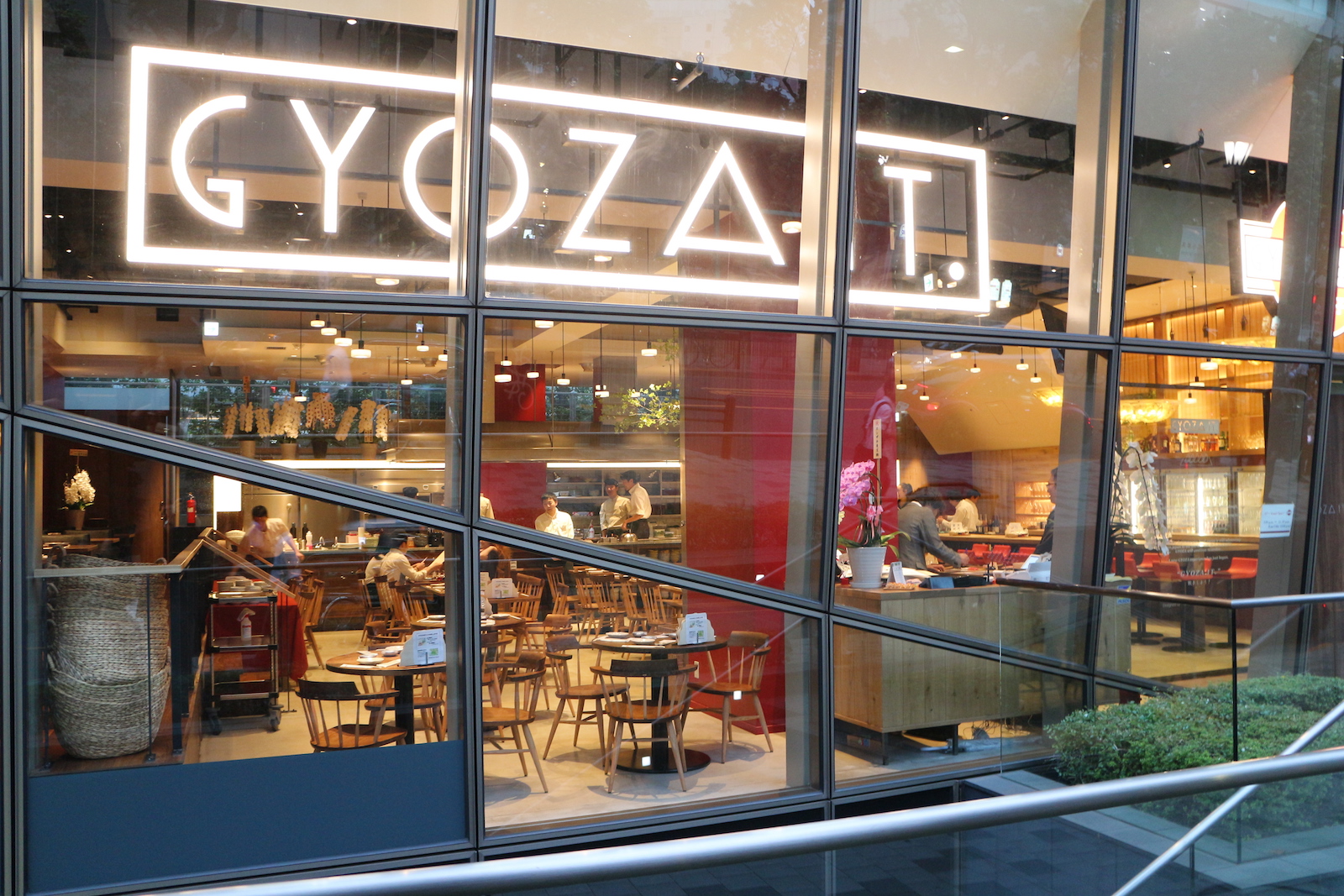

Gyoza is one of the ultimate Japanese comfort foods. Like curry rice and salisbury steak, it’s a food that children come running home to. Handmade gyoza are time-consuming to prepare. Every home has its own ingredients for the filling, which generally consists of meat and vegetables wrapped in gyoza skin. After placing them in a pan, they are fried with oil, then steamed with water, and finally cooked until water evaporates. The frying is the trickiest part as the finished quality truly varies depending on the right amount of water and the right frying time to get a crispy texture which fried gyoza are famous for.
Gyoza can sometimes be difficult to translate, but like other Japanese food words such as sushi, ramen and yakitori, it has become well known internationally. The origin of gyoza is Chinese dumplings, but it’s actually difficult to find fried dumplings in China. Steamed or boiled dumplings are their mainstream. Keita Katsumura, a spokesman for the marketing division at Ajinomoto Frozen Foods, which operates Gyoza It., says that gyoza can rightfully be called washoku (Japanese cuisine). Ever since washoku was added to UNESCO’s Intangible Cultural Heritage list, Japanese people have become more aware of the growing interest in Japanese food abroad. Japanese restaurants are increasing worldwide, but there aren’t many that focus just on gyoza.
The aim of the company in opening Gyoza It. is to convey the appeal of gyoza worldwide.
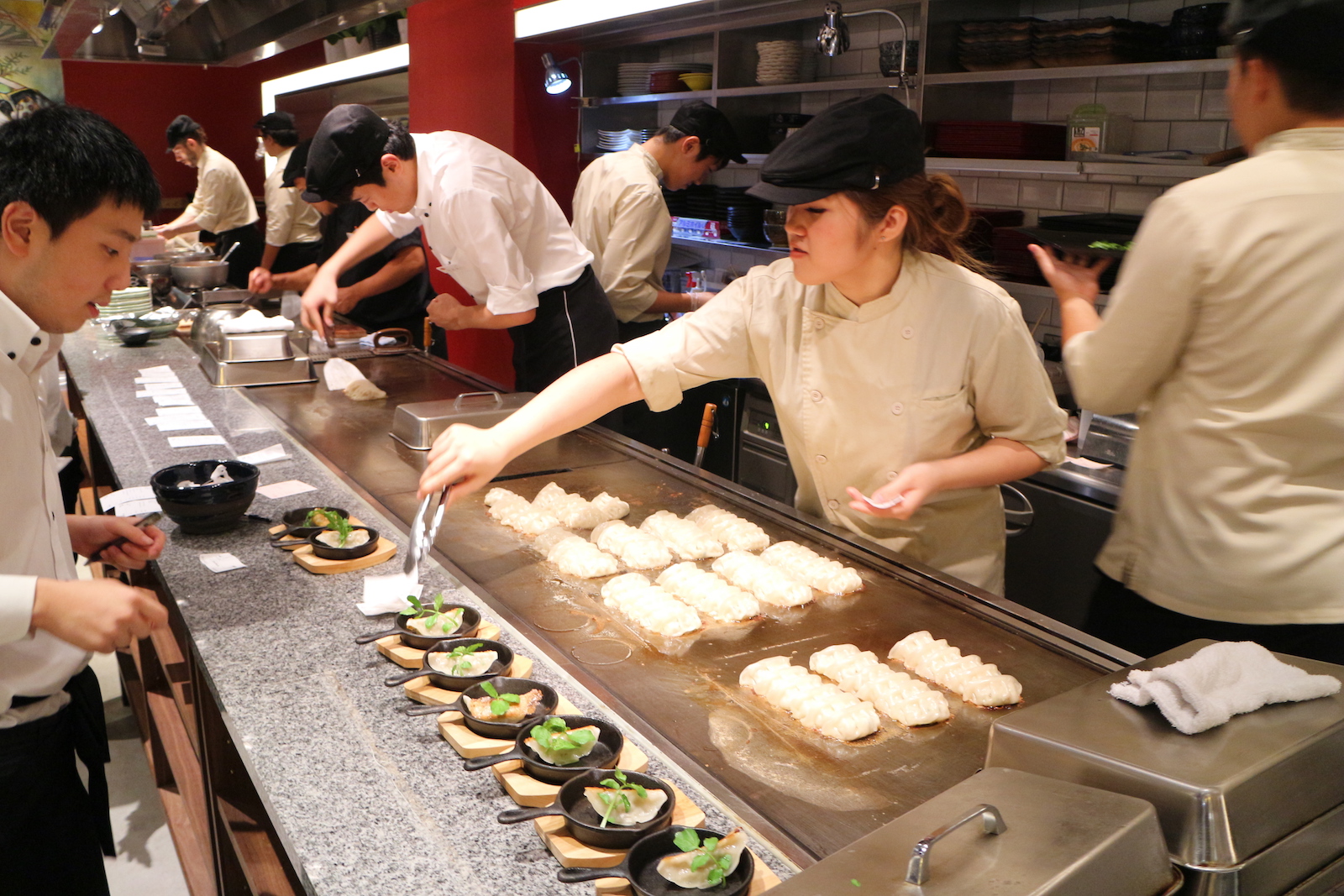
The atmosphere is stylish and casual with gyoza-shaped chandeliers hanging over the entrance area. There is a standing bar section near the entrance, and a spacious floor with tables that seat 120. A colorful cubism painting which dominates an entire wall is of people eating gyoza. The gyoza (and other tapas as well as fillet steaks) are grilled on a 5-meter-long teppan griddle in the open kitchen where an international staff of chefs has been assembled. On my visit, there were staff from the Philippines, Thailand, Taiwan, France, Italy, Australia and America. The head chef is Nepalese and he has added a Nepalese curry rice bowl to the menu, which was actually superb. Foreign residents and foreign visitors can be greeted in 10 languages.

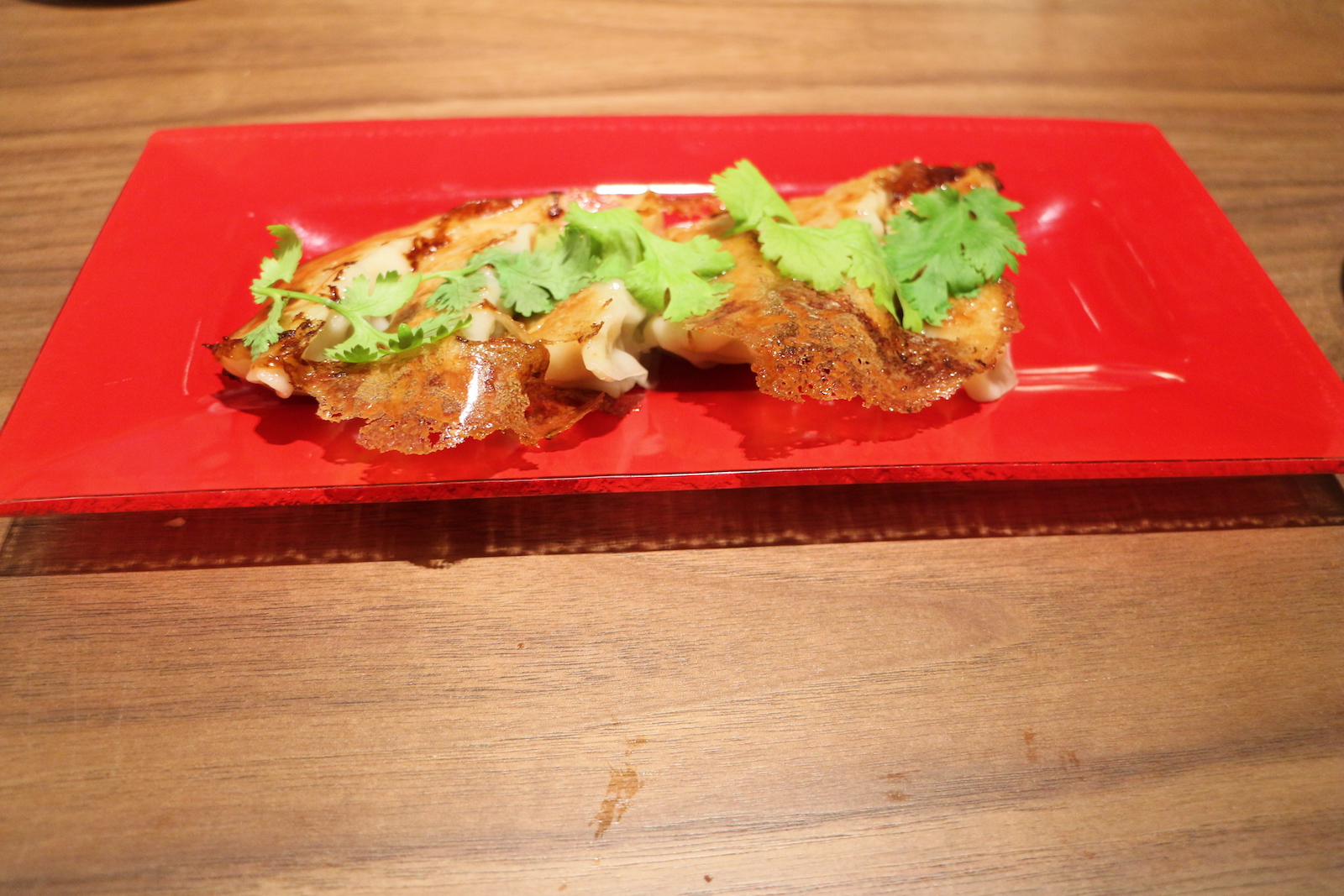
A plate of six pieces of “Signature GYOZA” costs only ¥400. There’s also a plate of gyoza without garlic for the same price, and a plate of three “The Big GYOZA” (¥500) with more signature fillings and “Duck Meat GYOZA Perfect for Wine” (¥600). You must try their signature gyoza with the garlic if you don’t have to worry about kissing anyone later in the evening. Although the gyoza are frozen,thanks to Ajinomoto’s professional chefs, the crispy texture is superb.

The fundamental sauce for gyoza is a mix of soy sauce, vinegar and hot sesame oil. The restaurant offers six different kinds of condiments - truffle salt, tomato sauce, yuzu pepper paste, clear ponzu vinegar, mustard meal, and kelp flakes. These six condiments accompany your first order of gyoza and you can also try each on your gyoza wrapped in leafy vegetables. I tried different variations but my favorite was yuzu pepper and ponzu over gyoza wrapped in shiso (Japanese basil) leaf.
Gyoza It. is an ideal venue for year-end parties. A resident sommelier can walk you through a surprisingly impressive list of wine. There is also a an extensive list of appetizers and teppanyaki that go well with gyoza.
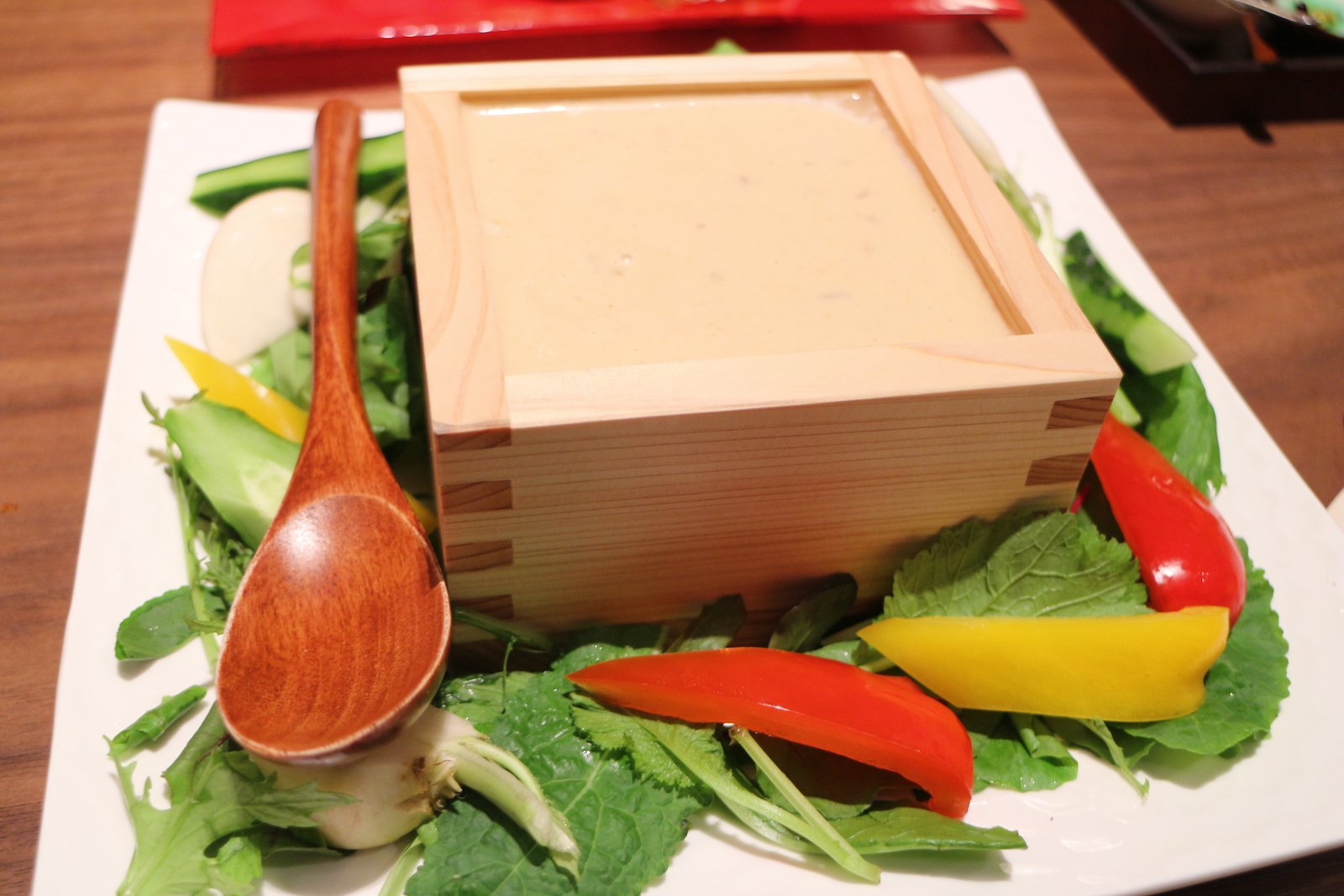
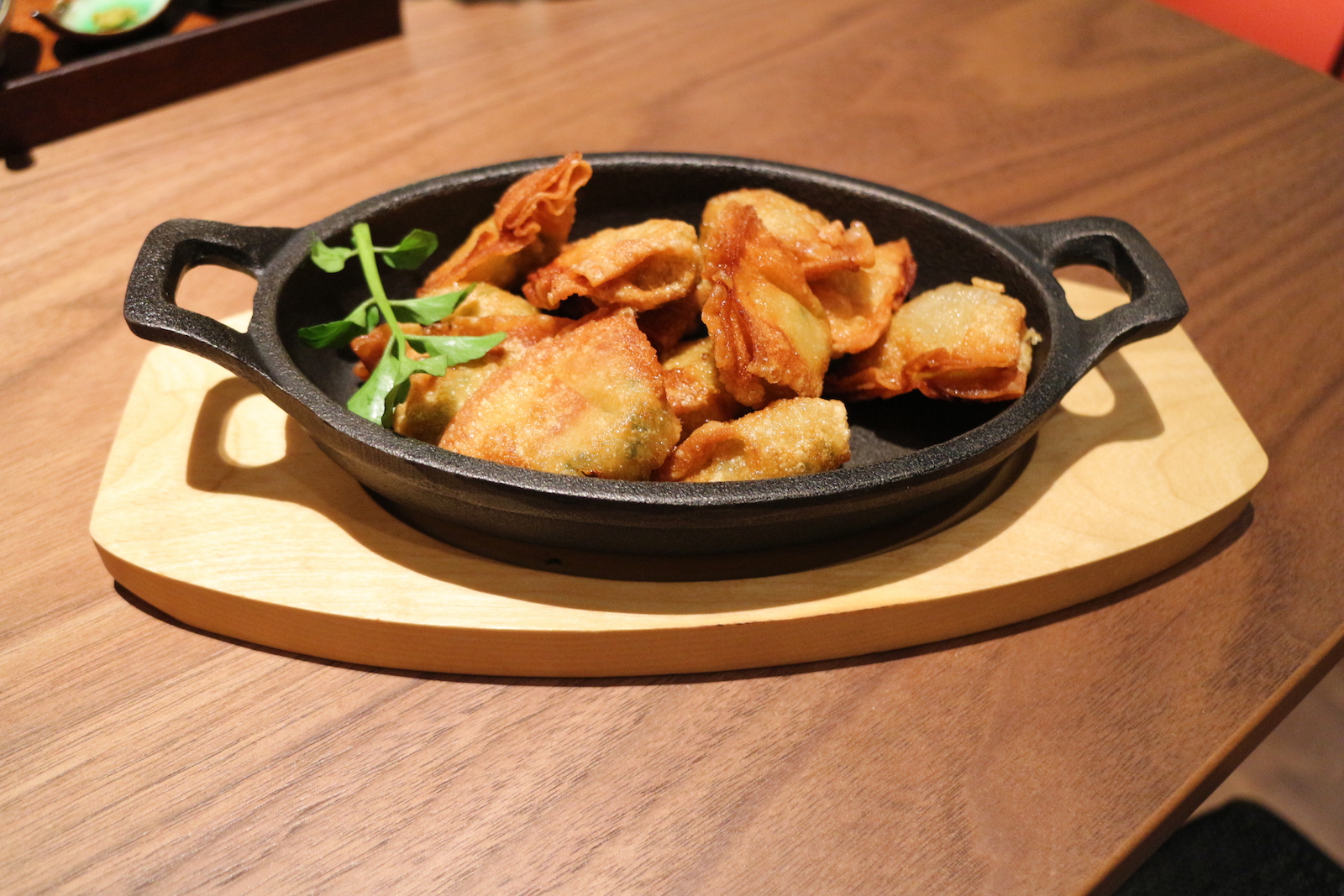

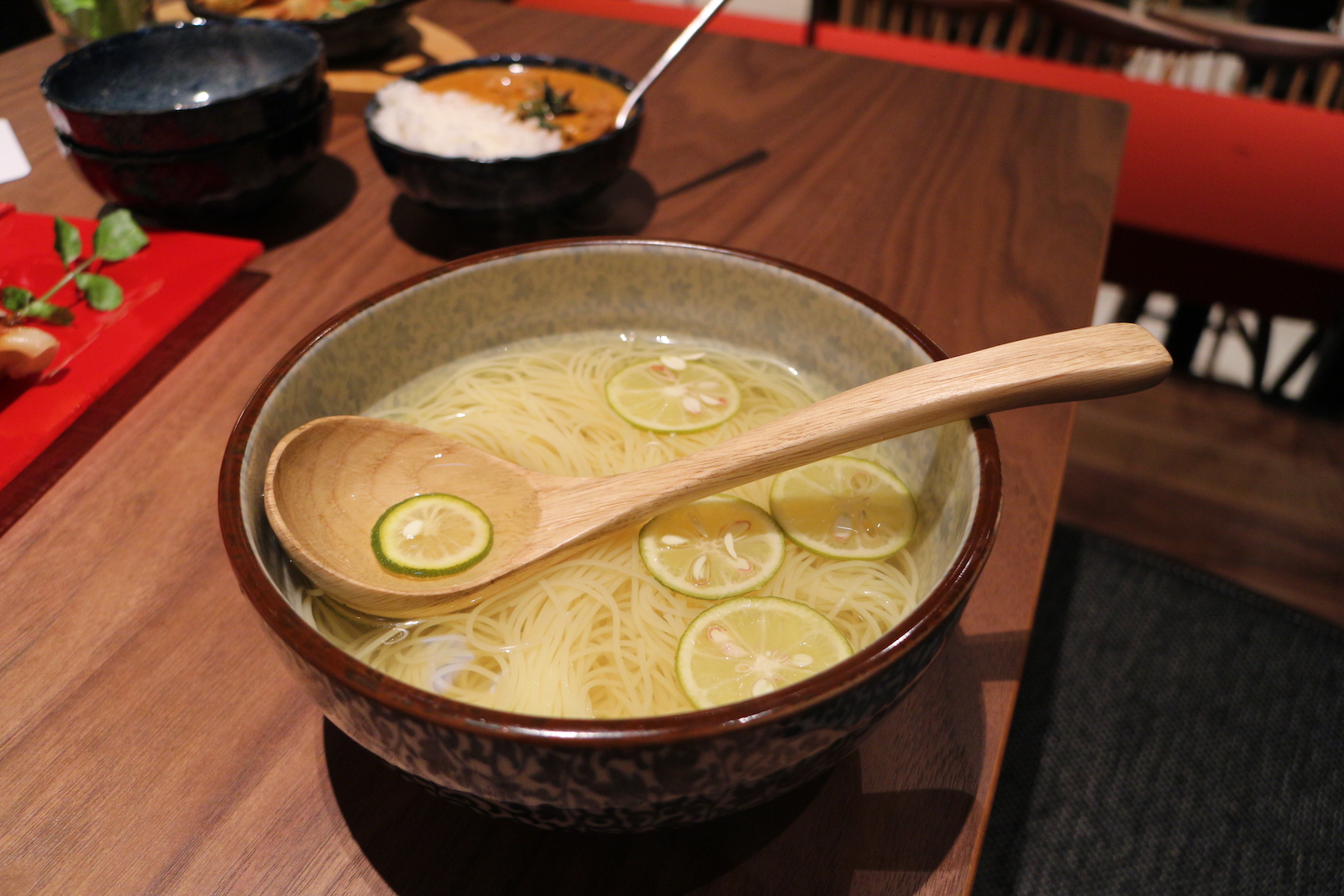
Address:
THE HEXAGON 1F, 4-7, Akasaka 5-chome, Minato-ku, Tokyo
Tel: 03-3560-4141
Hours: Open daily from 5 p.m. to 11 p.m. (last order 10 p.m.)
- External Link
- https://gyozait.com/en/
 Take our user survey and make your voice heard.
Take our user survey and make your voice heard.




3 Comments
Login to comment
akkk1
Fried dumplings in China are called "guotie" and have been found there long before Japan claimed it as their dish.
ebisen
What is it with the Chinese claiming everything was invented in China. A variant of Gyoza is documented in the Roman times, 2500 years ago (nevermind the gnocchi or other filled pasta).
Making a flour dough, wrapping minced meat in it and frying would be an idea that would occur everywhere around the world, not only in China.
akkk1
No one, except you, said anything about 'Chinese claiming everything was invented in China.' My response was to counterclaim the quote by the Ajiinomoto frozen food spokesman "... it’s actually difficult to find fried dumplings in China. Steamed or boiled dumplings are their mainstream."